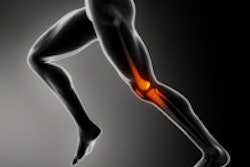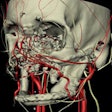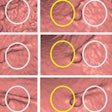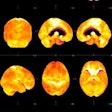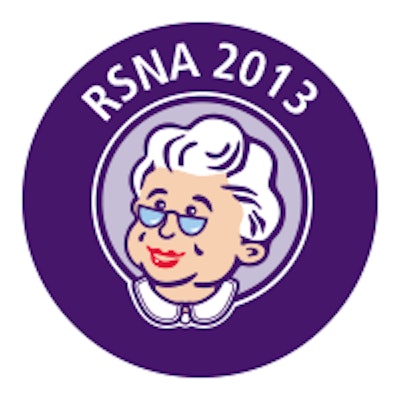
CHICAGO - If the experience of Brigham and Women's Hospital in Boston is any indication, inpatient imaging utilization dropped after 2009 following two decades of growth.
Researchers found that use of CT, conventional imaging, and nuclear medicine dipped after 2009, while ultrasound and MRI utilization remained stable.
"Knowledge of these trends may help in resource planning for healthcare institutions," said presenter Dr. Atul Shinagare.
There's been increasing concern about imaging overutilization and the risk of radiation exposure over the past several years. As a result, a growing emphasis on optimizing the use of imaging has led to programs such as Image Wisely and Image Gently, as well as federal regulation for the meaningful use of health information technology, Shinagare said.
"Therefore, there's a need to understand short- and long-term trends in imaging utilization," he said.
Several studies in the literature have reported continued growth, while others have showed decreased utilization. The studies have also used varied timeframes, populations, methodologies, and disease severity, and they did not provide long-term data, according to Shinagare.
Previous research from Brigham and Women's Hospital had tracked inpatient imaging utilization from fiscal year 1984 to fiscal year 2002, including adult inpatients and accounting for disease severity. As a result, the researchers sought to assess radiology services utilization for inpatients between fiscal year 2003 and 2012 after accounting for changes in severity of disease, Shinagare said.
The team performed a retrospective observational study at the 793-bed urban academic institution, which handles approximately 40,000 to 45,000 adult admissions each year. All adult patients admitted from October 1, 2002, through September 30, 2012, were included in the study.
The researchers mined their clinical data repository to tally imaging studies, which are coded by imaging modality. They calculated gross study numbers by counting the number of unique accession numbers. Imaging exams performed by nonradiologists were not included in the study.
They also examined the effect of "code bundling" of CT abdominal and pelvic studies by finding the number of CT reports per fiscal year. To maintain consistency throughout the study period, the researchers applied published professional, technical, and global relative value units (RVUs) to data from every year.
In addition, the team gathered the total number of adult admissions and their average length of stay for each fiscal year. Obstetric patients were excluded, however.
The number of admissions were adjusted using the U.S. Centers for Medicare and Medicaid Services' (CMS) case-mix index (CMI) based on diagnosis-related groups. The CMI was then multiplied by the gross number of admissions to determine the number of case-mix-adjusted admissions (CMAAs). This enabled the researchers to account for temporal changes in severity of disease and to compare to their historical data, Shinagare said.
The team then tallied the number of imaging studies per CMAA for each fiscal year, broken down by each imaging modality. They also studied CMAA-adjusted trends in RVUs to determine the proportion of expensive imaging studies such as CT, MRI, and nuclear medicine.
| Inpatient imaging utilization | ||||
| 2003 | 2009 | 2012 | p-value | |
| Patient admissions | 41,788 | 46,301 (peak) | 44,723 | 0.0001 |
| Imaging studies (total) | 119,888 | 150,593 (peak) | 127,486 | 0.01 |
| CT | 19,240 | 36,501 (peak) | 23,464 | 0.0007 |
| Nuclear medicine | 2,915 | N/A | 2,366 | 0.09 |
| Conventional (plain films, fluoroscopy) | 82,120 | N/A | 82,308 | 0.24 |
| Ultrasound | 8,695 | N/A | 9,640 | 0.59 |
| MRI | 6,918 | 10,141 (peak) | 9,708 | 0.05 |
Patient admissions increased overall during the study period. CMI rose from 2.37 in 2003 to 2.69 in 2012, a difference that was statistically significant (p < 0.0001); CMAAs also increased, as did the average length of stay during the study period.
Total imaging studies per CMAA declined over the study period (p = 0.02), as did CT (p = 0.0006), nuclear medicine (p = 0.0008), and conventional studies (p = 0.001). Ultrasound (p = 0.15) and MRI (p = 0.22) per CMAA did not change significantly.
Of particular note was CT utilization, which peaked per CMAA in 2009, but then dropped back to nearly 2003 levels, a difference that was statistically significant.
"The number of CT reports showed a similar trend, so we think this decline was real," he said.
The researchers found that clinical, technical, and professional RVUs all increased until 2009 and then experienced a slight decline afterward (p < 0.05). CMAA-adjusted RVUs had a slight overall drop over the study period (p > 0.05), while CT, MRI, and nuclear medicine global RVUs increased from 68.9% in 2003 to 71.2% in 2012 (p = 0.10).
| Long-term utilization trends | ||
| 1984-2002 | 2002-2013 | |
| CMI and CMAA | Increase | Increase |
| CMAA-adjusted RVUs | Increase | Stable |
| CT and nuclear medicine | Increase | Decline after 2009 |
| MRI | Increase | Stable |
| Ultrasound | Decline | Stable |
| Conventional studies | Decline | Decline |
Shinagare acknowledged a number of limitations of their study. For example, they did not assess outpatient or emergency department utilization, and they did not separately study interventional procedures and PET/CT use.
In addition, they did not include imaging performed by nonradiologists. Furthermore, it was a single-institution study, with a possible additional effect realized from the implementation of clinical decision support (CDS), he noted. The most recent RVUs were retrospectively applied, which allowed for consistent scale, Shinagare said. The group also didn't analyze causes of observed trends.
Nonetheless, the researchers concluded that inpatient imaging utilization decreased after 2009, with CT, conventional imaging, and nuclear medicine declining and ultrasound and MRI remaining unchanged.






